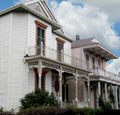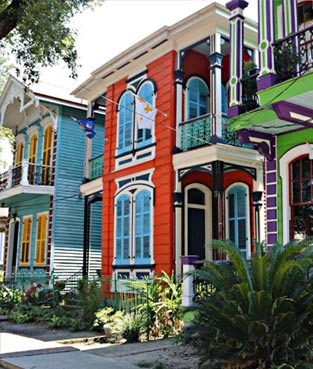New Orleans Neighborhoods
Once you decide to move to New Orleans, we invite you to explore the city, get to know its charms, learn its stories and of course indulge in its cuisine. Confused about which neighborhood is best for you? Check all of them out below...
Our culturally rich city offers many major attractions, from the electrifying clubs on Frenchmen Street and the old-world charm of the French Quarter to St. Charles Avenue (home to both Tulane and Loyola Universities) and many stately 19th-century mansions.
New Orleans is located in southeastern Louisiana along the Mississippi River. It is bordered by Lake Pontchartrain to the north and the Gulf of Mexico to the east. It's status as a world-famous tourist destination is due in part to its architecture, music, cuisine, annual Mardi Gras celebration, and many other festivals locals and tourists love. One of the most visited cities, New Orleans is often referred to as "the most unique city in America." It is known for its multicultural heritage and is considered the birthplace of jazz. There are a number of New Orleans city tours that you can take to explore the city, its architecture, and its history.
Check out our many beautiful neighborhoods below, and be sure to let us know if you have any questions -- we're happy to help!
Some New Orleans Neighborhoods:
-
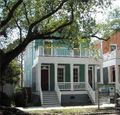
Broadmoor
Broadmoor is a nationally recognized historic district and home to more than 7,000 people. It has a number of architecturally significant homes. Native daughters and sons include Senator Mary Landrieu, as well as music producer Dave Bartholomew, who named his early record label Broadmoor Records. Read More » -

Bywater
Nestled into the curve of the Mississippi as it winds its way downriver from the French Quarter and the Marigny, the Bywater is a relaxed neighborhood of shotgun houses and Creole cottages, home to a thriving bohemian art scene. Read More » -
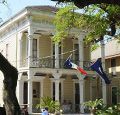
Esplanade Ridge
The large double-galleried houses and charming cottages that line Esplanade Avenue, running from the river out to City Park, are some of the most beautiful in New Orleans. Read More » -
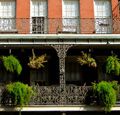
French Quarter
Truman Capote once described New Orleans as, "of all secret cities, the most secretive, the most unlike, in reality, what an outsider is permitted to observe." New Orleans' French Quarter may be its most secretive neighborhood. Here, in an area famous for its raucous nightlife and hedonistic abandon, there lives a community in love with the area's timelessness, its beautiful buildings and handcrafted details, its proximity to the river, and its quality as a great, walkable neighborhood of world-class restaurants and vibrant street life. Read More » -
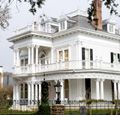
Garden District
Many people's first view of the Garden District comes from a streetcar rolling up St. Charles Avenue. This is often enough for visitors to begin a lifelong love affair with the area. Whether you're searching for a ghost in Lafayette Cemetery, exploring memories of New Orleans' antebellum past, watching a Mardi Gras parade, or gazing at the neighborhood's secluded mansions, the Garden District will cast a spell on you. Read More » -
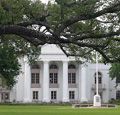
Gentilly
Gentilly, the long, graceful New Orleans neighborhood stretching from Esplanade Avenue to the Industrial Canal, is an area much favored by retirees, families with young children, and those attending and affiliated with Dillard University, its chief landmark and pride. Read More » -
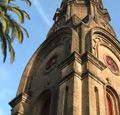
Irish Channel
The "Irish Channel" was originally home to many of the Irish workers who came to New Orleans in the 1830s to dig the New Basin Canal, completed in 1840. This area of small cottages and "shotgun" houses, located on narrow lots, continued to be inhabited throughout the 19th and 20th centuries, primarily by blue-collar workers who could afford the more modest prices. Today it is a vibrant and close-knit neighborhood with lots of local flair. Read More » -
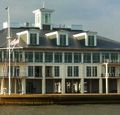
Lakeview
This is the northwest section of New Orleans, bordered by water on three sides. With Lake Ponchartrain to the north, the 17th Street Canal to the west, and the Orleans Avenue Canal to the east, the New Orleans lake area, not surprisingly, boasts a large sailing and boating community. Read More » -
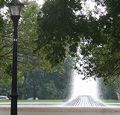
Lower Garden District
The Lower Garden District has a unique, eclectic flavor all its own. Centered around Coliseum Square, the area is one of graceful vistas and curving streets, replete with classical names like Dryades, Melpomene, and Terpsichore. Indeed, Lee Circle, originally named Tivoli Circle, was envisioned as an anchor for the nine streets extending from it, all named after the nine muses. Read More » -
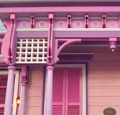
Marigny
Residents of the Faubourg Marigny are very proud of their neighborhood...and who can blame them? Here in this small wedge of real estate located just downriver from the French Quarter, you'll find everything that makes New Orleans a uniquely wonderful place. The jazz clubs lining Frenchmen Street are world-famous, and every night you can hear big-name acts jamming with the hippest stars of tomorrow. Read More » -
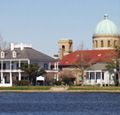
Mid-City
Located midway between the Mississippi River and Lake Pontchartrain , Mid-City is a neighborhood that has carved out its own unique identity. It is egalitarian, cheerful, a little more blue-collar and a lot more diverse than its more staid Uptown neighbor. Read More » -
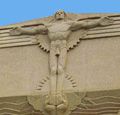
New Orleans East
New Orleans East is undoubtedly the largest section of the city of New Orleans, sprawling east of the Industrial Canal and north of the Mississippi River. Locals usually refer to the entire area as "New Orleans East," although some use this term to refer to a smaller section of the area. Read More » -

Ninth Ward
A very distinctive region of New Orleans, the Ninth Ward refers to the area located in the easternmost portion of the city. This down water area of the city is famous in name for being the largest (geographically) of New Orleans' 17 wards. Read More » -
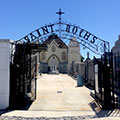
St. Roch
This New Orleans neighborhood took off in 1830 when the Crescent City was a bustling steamboat port. Home to one of the country’s largest populations of free people of color before the Civil War, the neighborhood has a proud history. Read More » -

Treme
Located on the northern border of the French Quarter above Rampart Street, Tremé is one of the oldest neighborhoods in the city, and early in the city's history was the main neighborhood of free people of color. It remains an important center of the city's African-American and Creole culture, especially the modern brass band tradition. Read More » -
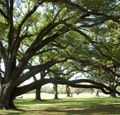
Uptown
The grand mansions along St. Charles Avenue, drowsing beneath stately ancient oaks....the energetic bustle of Magazine Street...the spires of Tulane and Loyola Universities...the cool shade of Audubon Park.....the raised Creole cottages and restrained Greek Revival houses and gabled Tudors and Carpenter's Gothic fantasies, line streets named Jefferson and Napoleon and Austerlitz and Amelia. The beauty of Uptown New Orleans is unsurpassed. Read More » -

Warehouse/CBD
The Warehouse District, which adjoins the CBD, is New Orleans' answer to New York's SoHo (without the exorbitant price tag). More recently, the Warehouse area has become the locus of a major visual arts renaissance in New Orleans, as more and more painters, sculptors and photographers move here to live and work. Read More »


